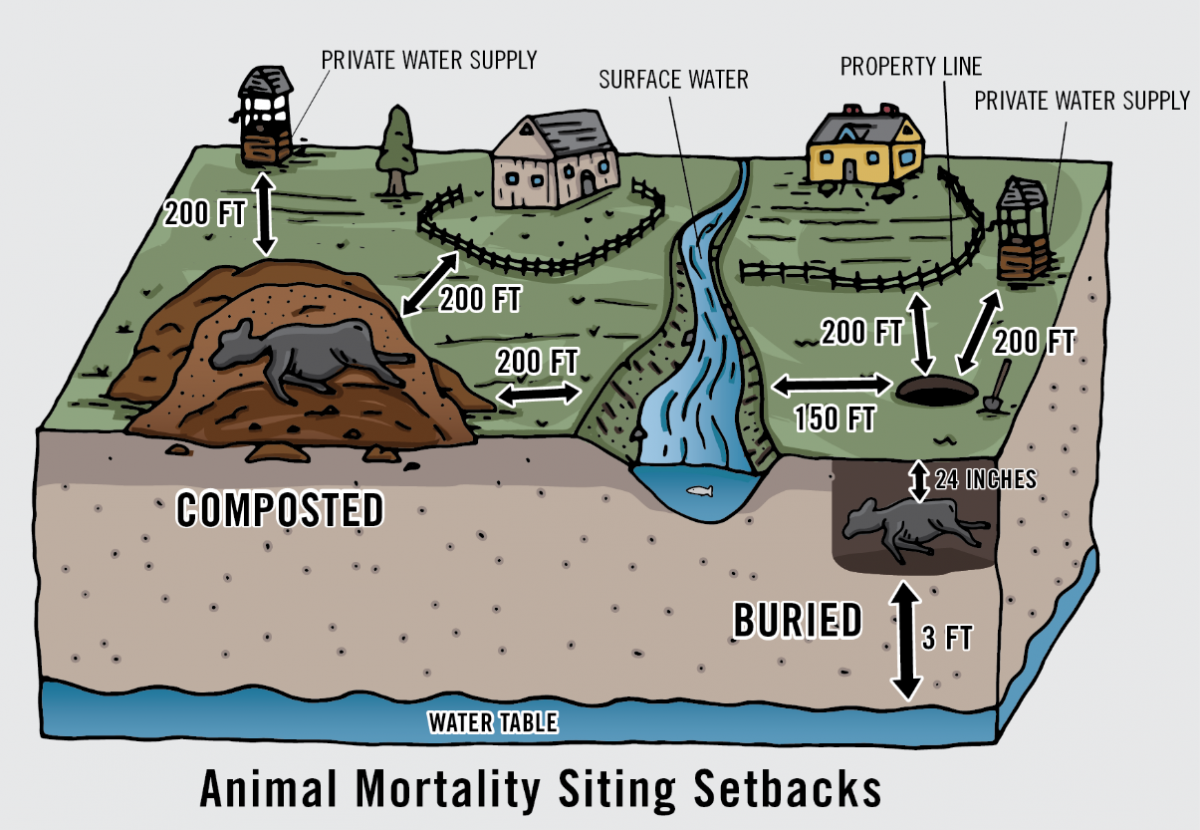
By Steve Cash, VT Agency of Agriculture, Food & Markets
As the winter season comes to an end and temperatures begin to rise, compost piles will begin to emerge from the winter’s snow. It is a great time of year to ensure your compost pile is active and to develop a plan to manage the pile(s) for the coming year. This plan may include identifying materials you intend to add to the pile, deciding when you are going to turn the pile and whether you will start a new pile, and determining if you are going to spread any of the piles that may have finished composting.
The Agency is aware that there are no longer mortality rendering services available in Vermont. Often times, proper disposal of livestock mortalities can be more difficult than manure management because animal carcasses are not easily stored for long periods of time and cannot be spread on cropland, without first being composted.
When disposing of livestock mortalities, biosecurity risks as well as environmental impacts must be considered as leachate from decomposing carcasses can travel through soil and groundwater.
The Required Agricultural Practices (RAPs) lay out basic requirements for the location of composting or burial sites for livestock mortalities. Animal mortalities must be properly stored, handled, and disposed of within 48 hours, so as to minimize adverse water quality impacts.
Mortality burial sites on farm property must be at least 150 feet from property lines and the top of the bank of surface waters, at least three feet above the seasonal high water table and bedrock, and covered with a minimum of 24 inches of soil. They are required to be located a minimum of 200 feet from public or private drinking water supplies and not located on lands in a floodway or subject to annual flooding.
While burial can be ideal management to prevent odor, flies, and neighborly complaints, it can be very difficult to find a site where the seasonal groundwater is far enough below the soil surface to provide three feet of space between carcasses and groundwater as well as two feet of soil on top of the carcasses.
Composting livestock mortalities may be the best option for a lot of farms. If composting mortalities on unimproved sites, the pile cannot be located in a floodway or land subject to annual flooding. Additionally, the site needs to be located at least 200 feet from property lines, the top of the bank of surface waters, and public or private drinking water supplies not owned by the farm; 300 feet from neighboring residences or public buildings; 100 feet from a ditch or conveyance to surface water; and not upon areas of exposed bedrock.
Composting can have its management challenges as well, such as finding the ideal location on the farm, having enough materials to properly compost the carcasses, and getting the right blend of carbon and nitrogen to achieve ideal composting ratios of carbon to nitrogen (40:1). Operators should try to limit the amount of dirt/soil they put in a compost pile. Soil can slow or even stop the composting process depending on how stable/decomposed the soil is. Rather than soil, farms should try to find a suitable nitrogen or carbon source, depending on what their pile needs, to add to the pile.
There is a variance application for operators who are certain the best available site does not meet the required setbacks (agriculture.vermont.gov/rap) but unimproved sites can never be located less than 100 feet from a private water supply, property boundary, or the top of the bank of surface water.
There are some clear challenges to complying with the RAP Requirements for mortality management in Vermont, and the Agency urges producers to reach out if they need assistance in ensuring they are managing mortalities in a way that minimize adverse water quality impacts. You can contact your farm water quality coordinator or call 802-828-2431 to request assistance.
Below are a few resources that may be helpful to you!
- USDA Field Guide to on-farm composting: https://www.aphis.usda.gov/animal_health/emergency_management/downloads/nahems_guidelines/livestock-mortality-compost-sop.pdf
- Cornell Waste Management institute:

